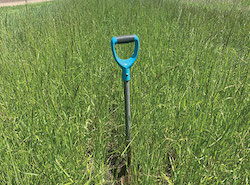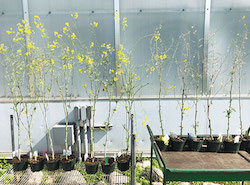| |
| |
 |
 |
| |
 |
|
@{mv_date_MMM d, yyyy}@ |
|
| |
 Resources and insights on how to prep bins, what factors increase storage risk and more.
» Read more...
Resources and insights on how to prep bins, what factors increase storage risk and more.
» Read more...
The rippling effects of the pandemic have forced the industry to focus on what lies ahead.
» Read more...
Plus, despite a long stretch of warm, dry weather, Alberta crop quality stays high.
» Read more...
|
| |
|
| |

Discover our newest trait – TruFlex™ LibertyLink ® canola. With the ability to choose between two best-in-class herbicides, farmers have more flexibility when it comes to controlling tough weeds like kochia, wild oats and cleavers.
» Knock out weeds...
Always follow grain marketing and all other stewardship practices and pesticide label directions. ©2022 Bayer Group. All rights reserved. For full stewardship information see: » https://traits.bayer.ca/en/product-legal
|
| |
|
| |
 Too often, if a portion of a grain farm is losing money, the same approach is tried again and again. Some growers continue to pour inputs into saline patches in a field in the hope of a net return. There aren’t any easy fixes to salinity with soil amendments, and products that claim to remove salts from the soil are selling fool’s gold. Two new case studies show how growers can stop wasting money on saline areas and get something growing.
» Learn more...
Too often, if a portion of a grain farm is losing money, the same approach is tried again and again. Some growers continue to pour inputs into saline patches in a field in the hope of a net return. There aren’t any easy fixes to salinity with soil amendments, and products that claim to remove salts from the soil are selling fool’s gold. Two new case studies show how growers can stop wasting money on saline areas and get something growing.
» Learn more... |
| |
 Sclerotinia stem rot, also known as white mould, is the number-one yield robber in Canadian canola. The disease, caused by the fungus Sclerotinia sclerotiorum, is tough to control, partly because it overwinters as sclerotia in the soil, where it can stay viable for a decade or even more. In the spring, its spores can infect flower petals and progress into the stem, creating lesions that kill plant tissue. Partially resistant cultivars, as well as some fully resistant cultivars, pose a challenge to growers. Now, a potential new solution could “silence” sclerotinia.
» Learn more...
Sclerotinia stem rot, also known as white mould, is the number-one yield robber in Canadian canola. The disease, caused by the fungus Sclerotinia sclerotiorum, is tough to control, partly because it overwinters as sclerotia in the soil, where it can stay viable for a decade or even more. In the spring, its spores can infect flower petals and progress into the stem, creating lesions that kill plant tissue. Partially resistant cultivars, as well as some fully resistant cultivars, pose a challenge to growers. Now, a potential new solution could “silence” sclerotinia.
» Learn more... |
| |
|
| |
 How do you slow the conversion of ammonium and minimize nitrogen leaching beyond the root zone? The answer is CENTURO®: a next-generation nitrogen stabilizer proven to give growers greater flexibility and protection while being gentle on anhydrous ammonia equipment. It’s crucial to protect spring-applied anhydrous. With the right plan in place, you can set yourself up for success. Keep reading to get other helpful tips about guarding your nitrogen investment.
» Learn more
How do you slow the conversion of ammonium and minimize nitrogen leaching beyond the root zone? The answer is CENTURO®: a next-generation nitrogen stabilizer proven to give growers greater flexibility and protection while being gentle on anhydrous ammonia equipment. It’s crucial to protect spring-applied anhydrous. With the right plan in place, you can set yourself up for success. Keep reading to get other helpful tips about guarding your nitrogen investment.
» Learn more |
| |
|
| |

|
| |
| |








